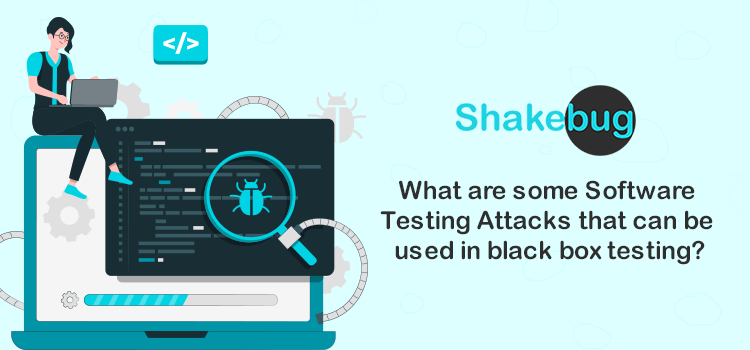Boundary Value Analysis (BVA):
Attack :
A type of attack that can be used in black box testing is boundary value analysis (BVA). Examining the boundaries between valid and invalid input values, as well as analyzing how the system responds to those inputs, is part of this technique.
Objective
BVA assists testers in identifying potential errors or vulnerabilities in software systems by focusing on areas where there may be weaknesses due to incorrect data type or range assumptions. Using this method, testers can uncover any unexpected behavior within an application that, if left unchecked, could lead to security issues.
Equivalence Partitioning:
Action :
Software testing attacks are essential for black box testing. Equivalence Partitioning is one of the most commonly used software testing attack strategies, which involves dividing input data into classes and then performing tests on each class to determine if they produce the same results or not.
Objective :
The objective of this strategy is to reduce test cases by focusing only on valid inputs that will yield meaningful outputs. By using these this techniques, testers can ensure their applications are thoroughly tested before being released into production environments.
Random Testing:
Action :
Random Testing is a type of black box testing that involves randomly selecting actions and objectives to test the software. This method can be used to uncover errors in functionality, usability, compatibility, security or performance issues.
Related Read:- The Role of Usability Testing in Mobile App Development
Objective:
Random Testing helps identify any unexpected behavior from the system under test by exercising it with random inputs and analyzing its output. It also allows testers to explore areas of the application which may not have been tested before due to lack of time or resources.
Negative Testing:
Action :
Negative Testing is an important part of black box testing, as it helps to identify potential vulnerabilities and weaknesses in the software. This type of attack involves deliberately entering invalid data or commands into a system to see how it responds. It can also involve trying different combinations of inputs that are not normally used by users.
Objective :
Negative Testing is an important objective of black box testing. It involves attempting to break the system by providing invalid, unexpected or random data as input and observing whether it responds correctly.
Fuzz Testing:
Action:
Fuzz Testing is one of the most common software testing attacks used in black box testing. It involves sending random data to a program or system and observing how it responds. This type of test can be automated using tools like Peach Fuzzer which can generate large amounts of random inputs for programs and systems quickly and efficiently.
Objective :
The objective of fuzz testing is to find any flaws in the input validation process which could lead to security issues such as buffer overflows, memory corruption and code injection attacks. This technique helps developers identify bugs before they are released into production environments, ensuring better quality control for their applications.
SQL Injection:
Attack :
SQL Injection is one of the most common software testing attacks used in black box testing. This attack involves providing malicious code to a database server in order to gain access to or modify data stored there. To avoid this type of attack, developers should always interact with databases using parameterized queries, as well as regularly patching their applications for any known vulnerabilities. They should also make certain that all user input is validated before it is sent to the database server.
Objective :
The objective of this attack is to bypass authentication or authorization mechanisms in order for attackers to gain unauthorized access to a system’s resources. To avoid these attacks, developers and testers must use secure coding practices when developing applications and thoroughly test them before releasing them into production environments.
Related Read:- Common Bug Reporting Mistakes
Cross-Site Scripting (XSS):
Action :
Cross-Site Scripting (XSS) is one of the most common black box software testing attacks. In XSS, malicious code is injected into a web application, which is then executed by unsuspecting users. This type of attack enables attackers to gain access to sensitive information or cause system damage. It is critical for both developers and testers to understand how this attack works so that they can take preventative measures.
Objective :
XSS attacks are particularly dangerous because they allow attackers to bypass authentication systems and execute arbitrary commands on vulnerable web applications. The objective of this type of attack is typically to steal sensitive information such as passwords, credit card numbers, etc., which can then be used for identity theft or other criminal activities.
Path Traversal:
Action :.
Path Traversal is a type of attack that can be used in black box testing. This type of attack involves an attacker attempting to gain access to files and directories on the system by manipulating file paths or URLs. Path traversal attacks are typically done through brute force methods, where attackers try different combinations until they find one that works.
Objective :
The objective of this attack is to gain access to files and directories on the system which are not intended for public use. It involves entering commands into an application or website, such as “../” or “..\”, which allow attackers to traverse up the directory tree and view sensitive information. This type of attack can also be used to manipulate data stored within databases and other applications by changing file paths.
Parameter Tampering:
Action :
Parameter Tampering is a type of Software Testing Attack that can be used in black box testing. This attack involves changing the parameters or values sent to an application, such as query strings and form fields, in order to test its security. The goal of this attack is to identify vulnerabilities within the system by manipulating input data and observing how it affects the output results. By doing so, testers are able to uncover potential flaws which could lead to malicious attacks if left unchecked.
Objective :
The objective of this type of attack is to test the security measures taken by an application or system, as well as its ability to detect any changes made by attackers. By using parameter tampering techniques, testers can determine if there are any weaknesses that need addressing before releasing a product into production.
Session Hijacking:
Action:
One of the most common Software Testing Attacks used in black box testing is Session Hijacking. This attack involves an attacker taking control of a user’s session by intercepting and using their credentials to gain access to restricted information or resources. To prevent this type of attack from occurring, it is important for businesses to implement strong authentication measures as well as secure protocols when transmitting sensitive data over networks.
Objective :
The objective of this attack is to gain access to an authorized user’s session by stealing their credentials or using other methods such as IP spoofing and packet sniffing. This method allows the attacker to bypass security measures, such as authentication systems, and gain unauthorized access to sensitive data or resources on the system.


